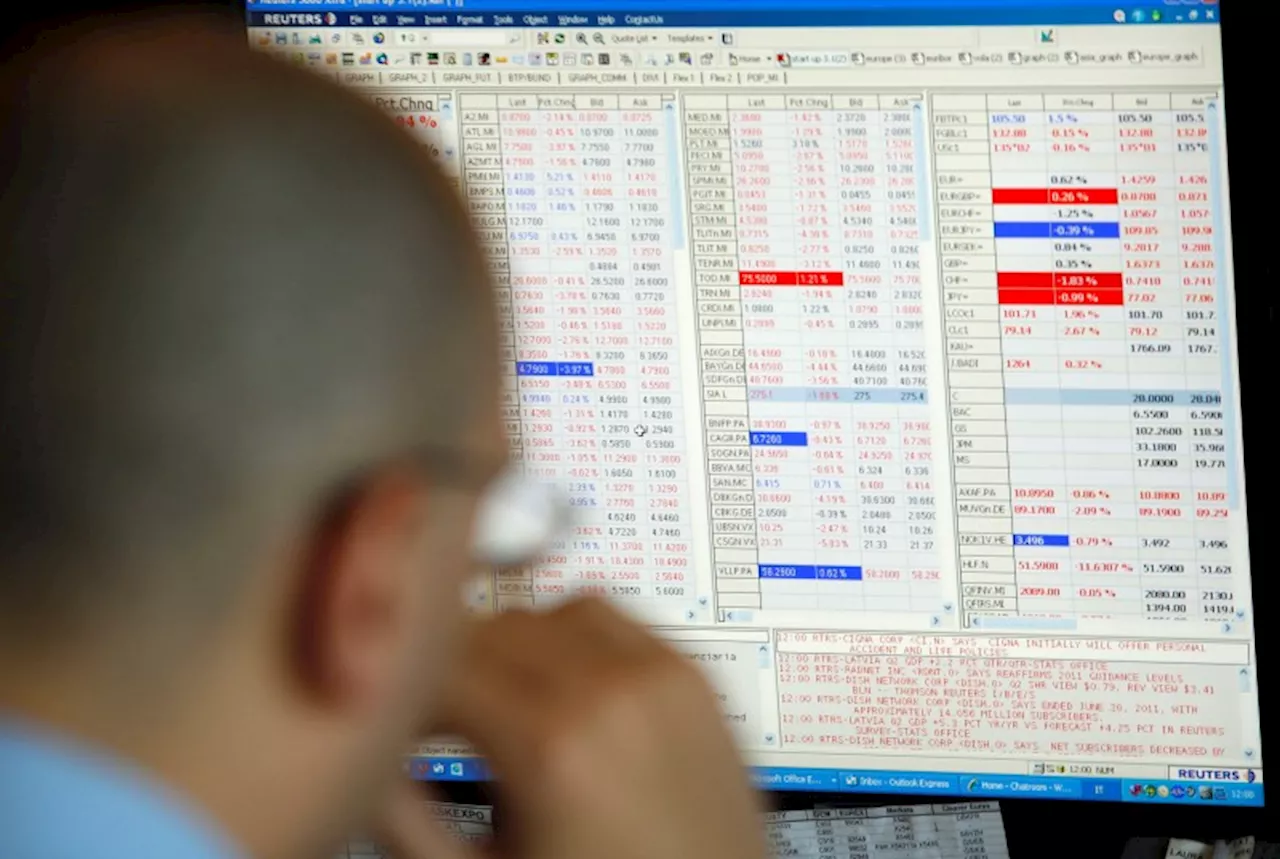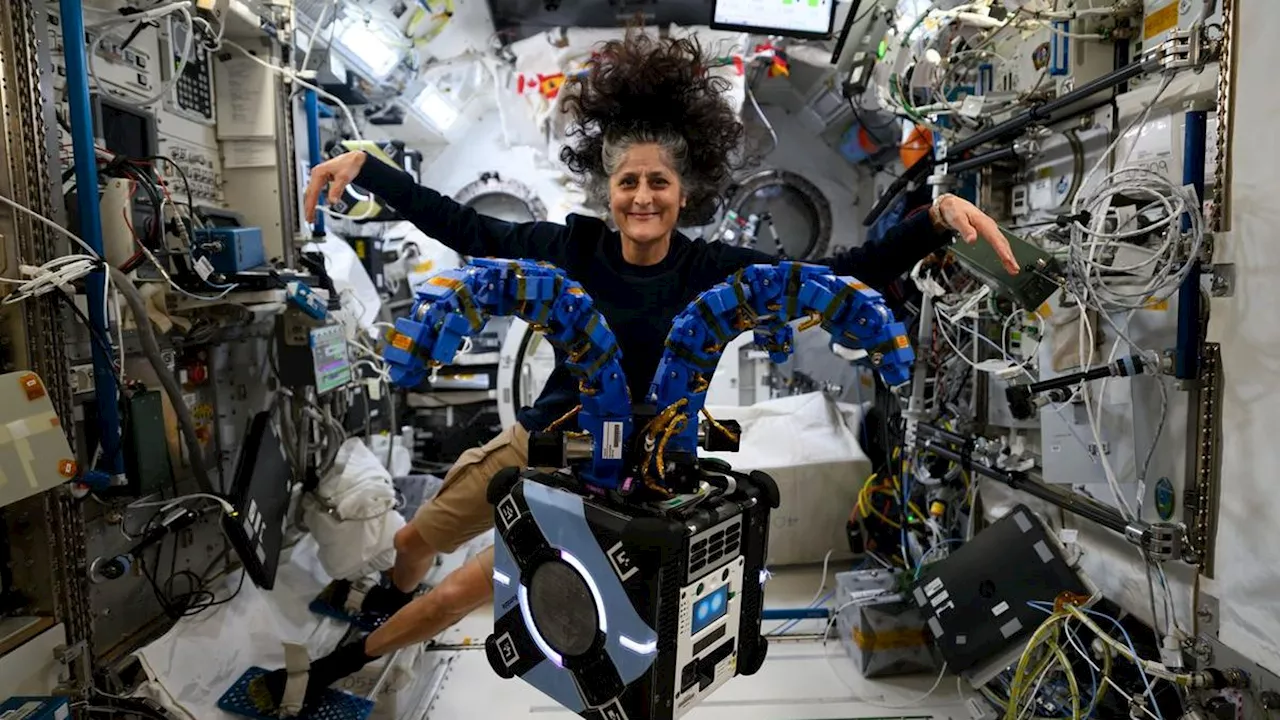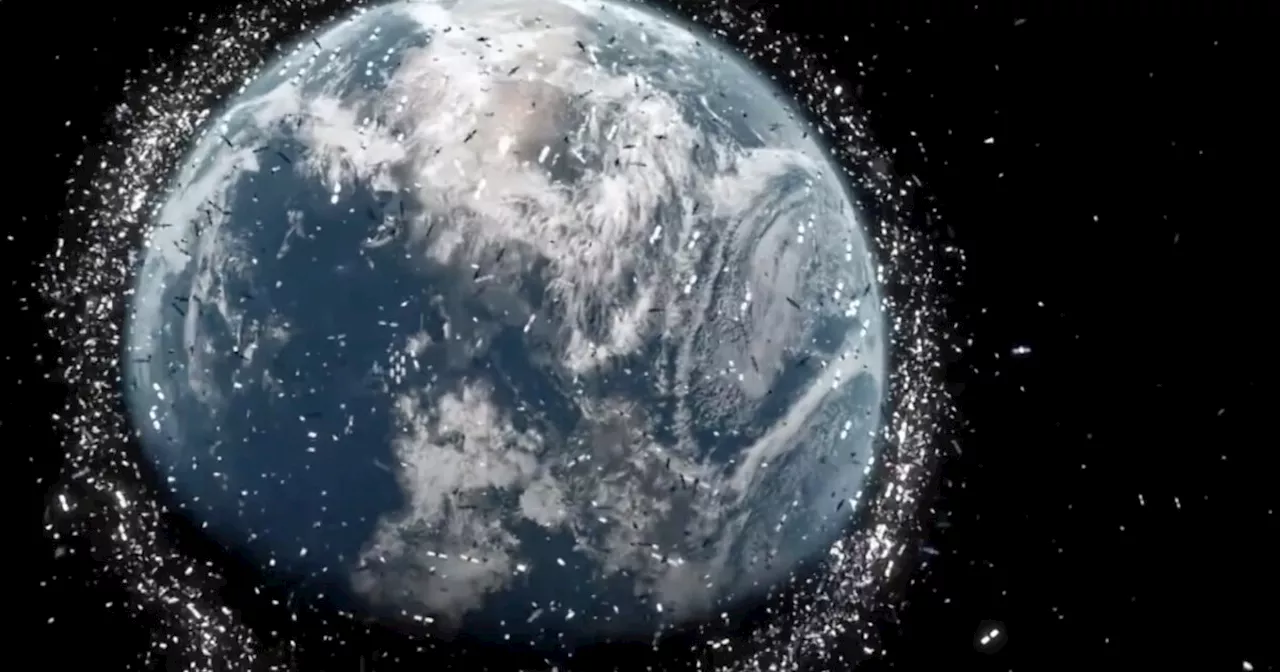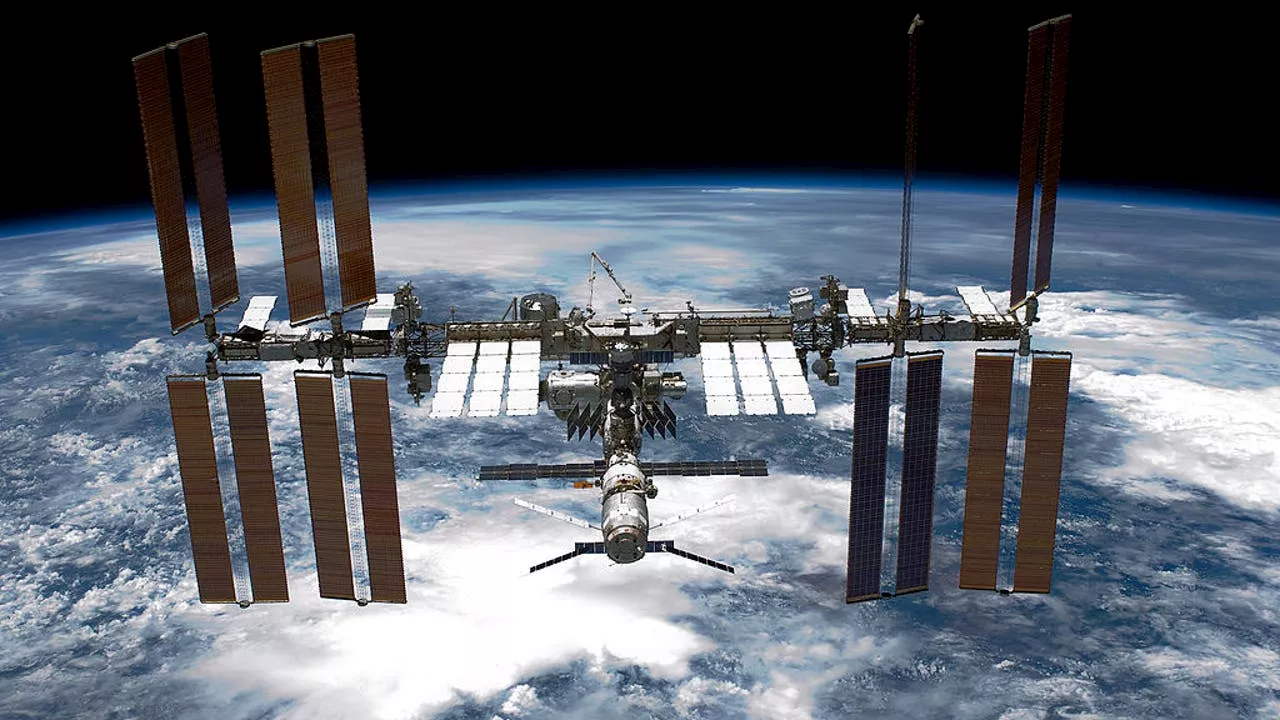Thousands of defunct satellites and fragments orbit Earth at dangerous speeds, posing a significant risk to space travel. Experts warn that this space debris could lead to Kessler Syndrome, a chain reaction of collisions that makes parts of Earth's orbit unusable. The European Space Agency reports that only 10,200 out of 13,230 satellites launched remain in orbit, and defunct satellites, rocket boosters, and even lost tools contribute to the growing hazard. Spacefaring nations are taking action to address this threat, with the ESA's Zero Debris Charter aiming to nearly eliminate space junk by 2030.
Space debris threatens the future of space travel as thousands of defunct satellites and fragments circle Earth at dangerous speeds, experts warn.Of 19,590 satellites launched since 1957, about 13,230 remain in orbit - but only 10,200 still function, the European Space Agency reported in September 2024.
reports. Some debris even reaches Earth - a Florida family recently filed an $80,000 claim after space station debris damaged their home.Named after former scientist Donald Kessler, who identified the threat in 1978, Kessler Syndrome describes a chain reaction where orbiting debris creates more debris through collisions.The phenomenon could make parts of Earth's orbit unusable for space travel. A 2009 incident demonstrated this risk when two satellites collided over Siberia, creating a new field of debris, the American Scientist reported.Spacefaring nations launched about 50,000 tons of material into orbit since the 1950s.
and other space organizations worldwide now take more concrete actions to address the hazard.
Space Debris Kessler Syndrome Space Travel Satellites Space Safety
United States Latest News, United States Headlines
Similar News:You can also read news stories similar to this one that we have collected from other news sources.
 Earth from space: Otherworldly stripes and shadowy dunes share center stage in 'hottest place on Earth'Harry is a U.K.-based senior staff writer at Live Science. He studied marine biology at the University of Exeter before training to become a journalist. He covers a wide range of topics including space exploration, planetary science, space weather, climate change, animal behavior and paleontology.
Earth from space: Otherworldly stripes and shadowy dunes share center stage in 'hottest place on Earth'Harry is a U.K.-based senior staff writer at Live Science. He studied marine biology at the University of Exeter before training to become a journalist. He covers a wide range of topics including space exploration, planetary science, space weather, climate change, animal behavior and paleontology.
Read more »
 Seismometers track atmospheric shock waves from incoming space debrisA Chinese spacecraft that burned up high over Los Angeles created a sonic trail detected by ground-based sensors.
Seismometers track atmospheric shock waves from incoming space debrisA Chinese spacecraft that burned up high over Los Angeles created a sonic trail detected by ground-based sensors.
Read more »
 Analysis-Global push for cooperation as space traffic crowds Earth orbitAnalysis-Global push for cooperation as space traffic crowds Earth orbit
Analysis-Global push for cooperation as space traffic crowds Earth orbitAnalysis-Global push for cooperation as space traffic crowds Earth orbit
Read more »
 Astronauts Test Robotic Arms for Space Debris RemovalNASA astronauts are testing a new robotic technology called REECH on the International Space Station (ISS). REECH uses tentacle-like arms with gecko-like adhesive pads to capture and relocate objects in orbit. The technology aims to assist in satellite maintenance and space debris management.
Astronauts Test Robotic Arms for Space Debris RemovalNASA astronauts are testing a new robotic technology called REECH on the International Space Station (ISS). REECH uses tentacle-like arms with gecko-like adhesive pads to capture and relocate objects in orbit. The technology aims to assist in satellite maintenance and space debris management.
Read more »
 NASA Tests Robotic Arms for Space Debris Removal on ISSNASA astronaut Suni Williams demonstrates a robotic arm with tentacle-like appendages designed for capturing and handling objects in space.
NASA Tests Robotic Arms for Space Debris Removal on ISSNASA astronaut Suni Williams demonstrates a robotic arm with tentacle-like appendages designed for capturing and handling objects in space.
Read more »
 Kessler syndrome: How crowded satellite orbits could lead to a runaway space debris problemRooted in fact-based, transparent reporting, Newsy is an award-winning opinion-free network owned by the E.W. Scripps Company that is relentlessly focused on “the why” of every story and seeks to enable a more intimate and immersive understanding of the issues that matter.
Kessler syndrome: How crowded satellite orbits could lead to a runaway space debris problemRooted in fact-based, transparent reporting, Newsy is an award-winning opinion-free network owned by the E.W. Scripps Company that is relentlessly focused on “the why” of every story and seeks to enable a more intimate and immersive understanding of the issues that matter.
Read more »
